If your site is encountering the “Upload: Failed to Write File to Disk” error, it can be more than annoying because you’re not able to upload new files until you’ve fixed.
Fortunately, there are a few steps you can take to resolve this WordPress error, so you can properly upload files to your Media Library again. The potential solutions are as simple as adjusting a few settings via File Transfer Protocol (FTP) and making a call to your hosting provider.
In this article, we’ll explain why you may be seeing the “Upload: Failed to Write File to Disk” error on your WordPress site. Then we’ll walk you through three potential solutions to get your workflow back on track.
Let’s get to it!
Why You’re Seeing the “Upload: Failed to Write File to Disk” error in WordPress
Most of the time, the Upload: Failed to Write File to Disk Error is due to a problem with your site’s file permissions. As a security measure, WordPress only enables certain users to modify its files, including the folder that stores uploads.
If the permissions for this folder are set to prevent users from modifying or ‘writing to’ it, then your upload attempts will fail. You can quickly determine if this is the issue by using the Site Health tool.
Navigate to Tools > Site Health in your dashboard, and click on the Info tab. The last dropdown menu will show you the file permissions for a handful of folders, including the uploads directory:
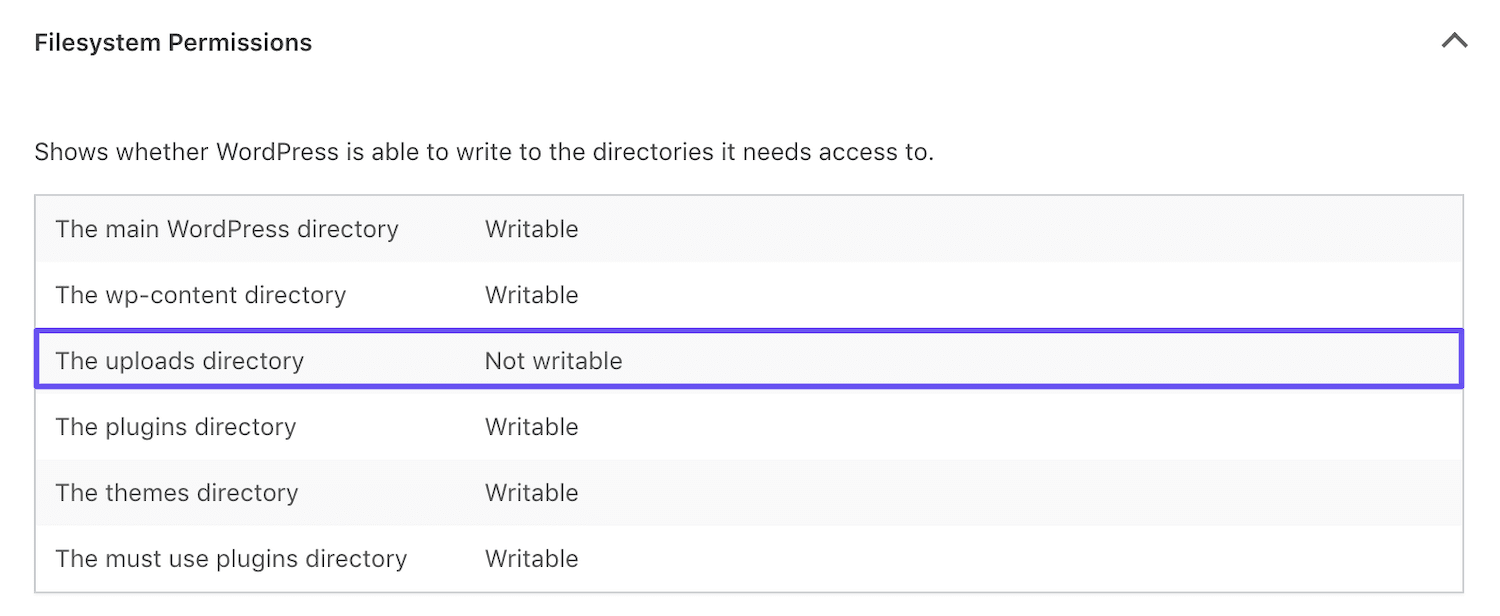
The directory should be set to Writable. If it’s set to Not writable, then you know you’re dealing with a permissions issue.
There are a few other, less common reasons for this problem. When you add a new media file, WordPress stores it in a temporary folder before moving it to the uploads directory. If the temporary folder is full or unavailable, you may see the Upload: Failed to Write File to Disk error.
Additionally, if you’ve used all the disk space on your server that was allotted to you by your hosting plan, you may see this error. In this case, it’s your server’s way of telling you there’s no more room for additional files.
How to Fix the Upload: Failed to Write File to Disk Error in WordPress (3 Potential Solutions)
Fixing the Upload: Failed to Write File to Disk error is fairly simple. Here are three solutions for tackling this issue, based on the root cause.
1. Change the File Permissions of Your Uploads Directory
If you’ve used the Site Health tool to determine that your Upload: Failed to Write File to Disk error is due to incorrect permissions, you’ll need to use File Transfer Protocol (FTP) to fix it. If you’re unfamiliar with this process, we have a full guide on how to get started.
You’ll need an FTP client such as FileZilla installed on your computer (if you want to show hidden files here is the trick). You’ll also require your FTP credentials, which you should be able to find in your hosting account dashboard.
Kinsta customers can find theirs directly in MyKinsta, by navigating to Sites, clicking on the relevant domain, and looking under SFTP/SSH in the Info tab:
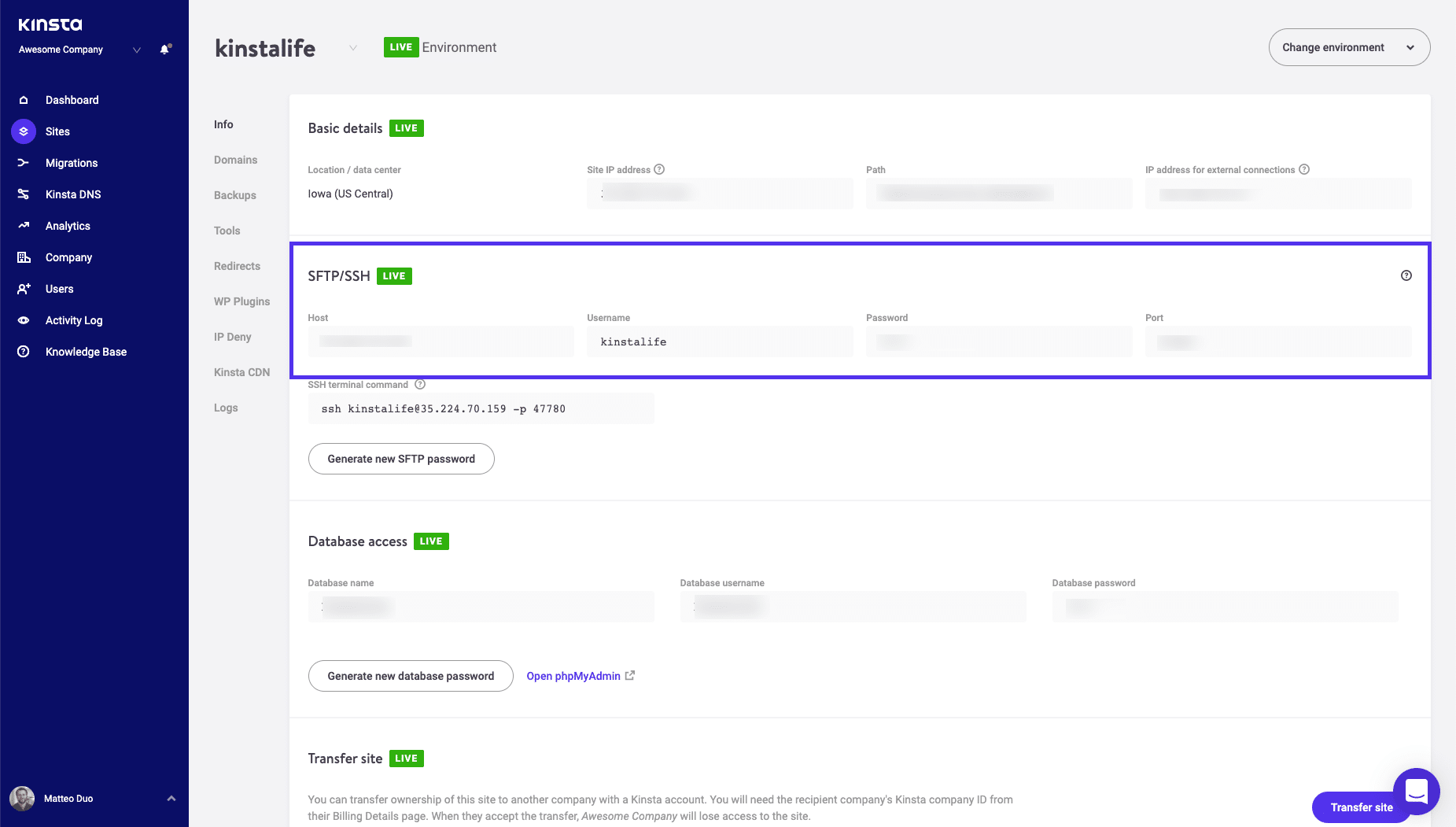
Enter your credentials in your FTP client and launch your connection to the server. Then navigate to your uploads directory in public_html > wp-content:
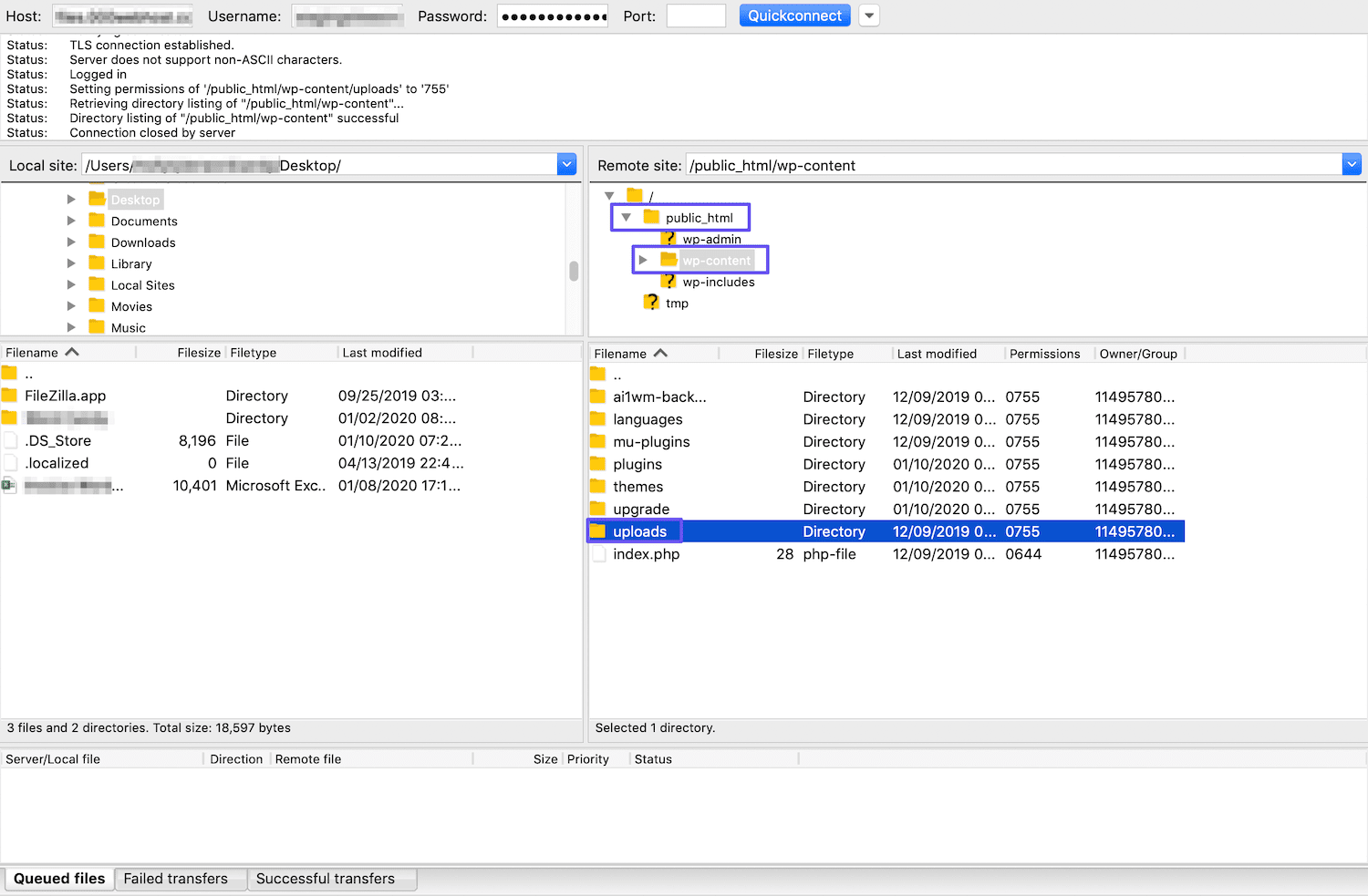
Right-click on the folder, and then select File Permissions:
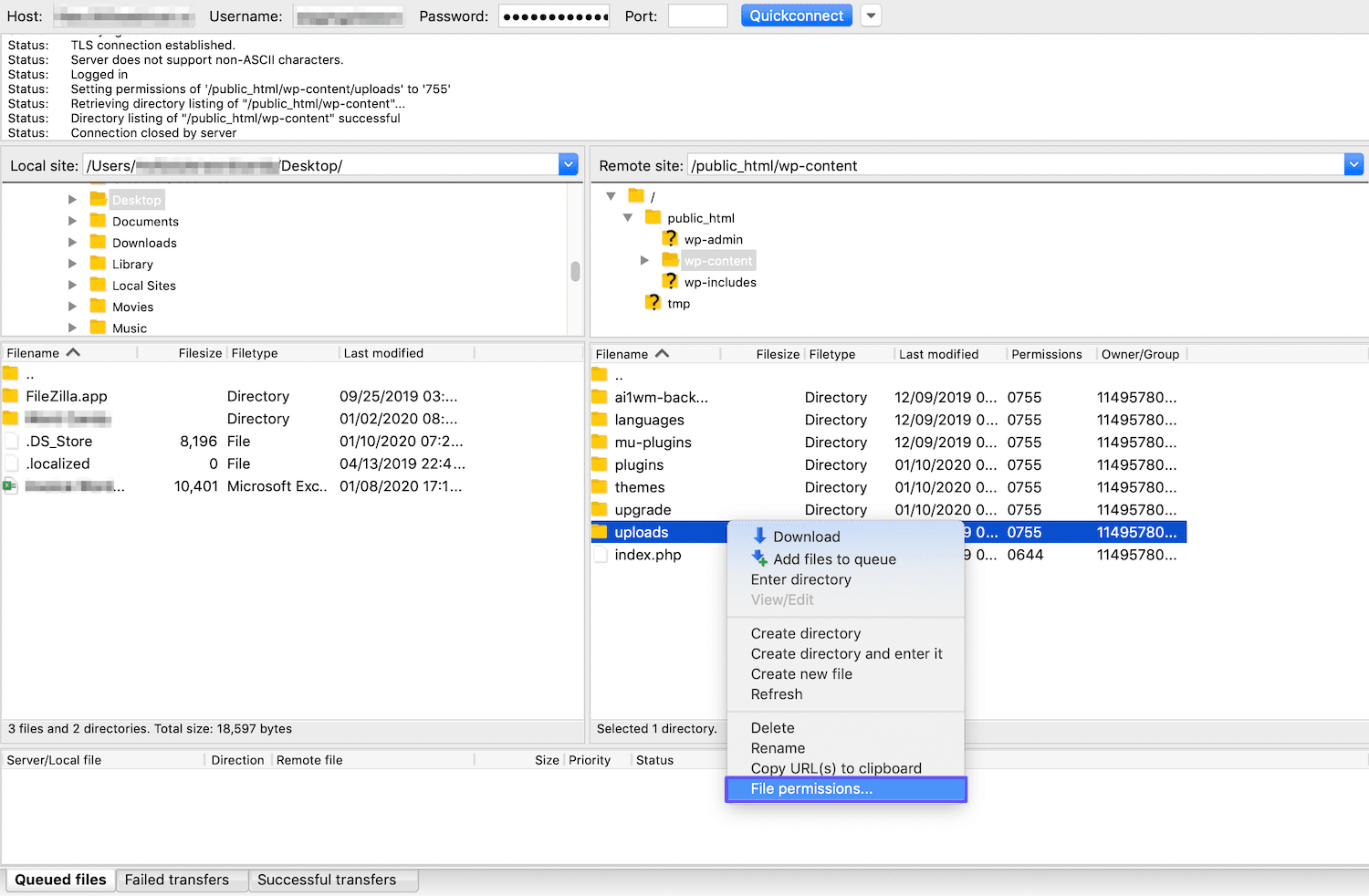
A numeric system is used to determine the permissions settings for your site’s files. Your uploads directory should be set to 755:

Click on the OK button to save your new permissions settings. Then return to your WordPress site.
If you check the Site Health tool again, your uploads folder should now be listed as Writable:
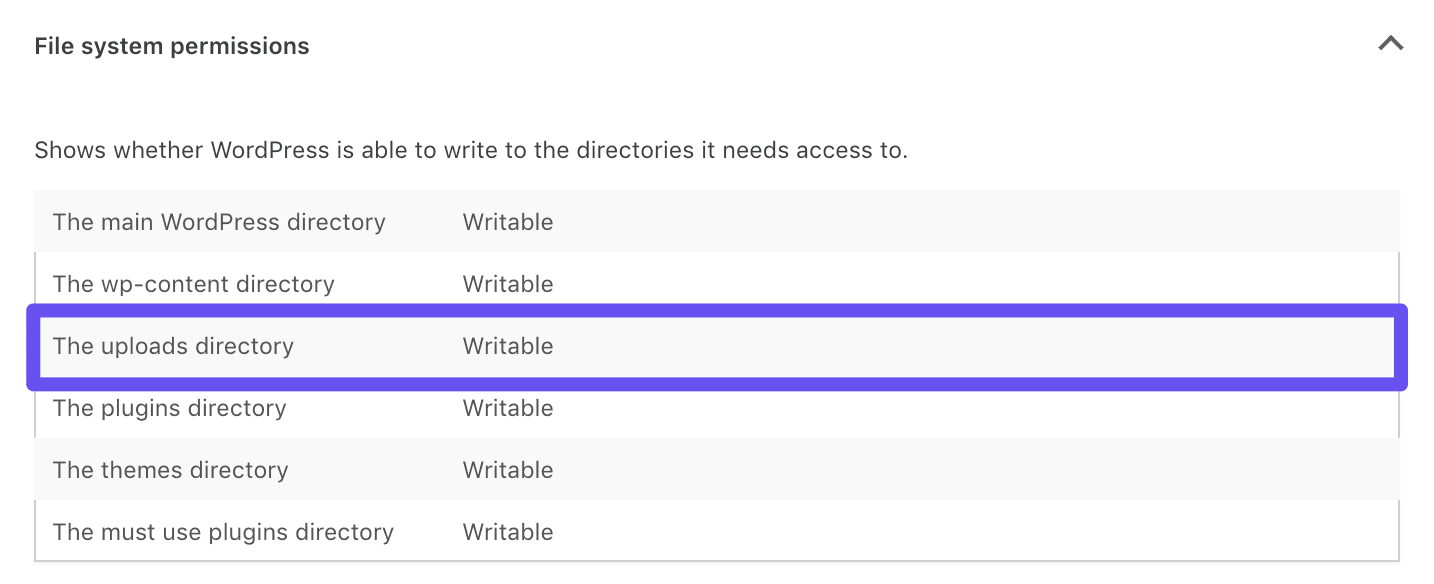
At this point, you should be able to upload files to your WordPress site without issue.
2. Empty the WordPress Temporary Folder
If file permissions aren’t your problem, you may want to try emptying the temporary folder WordPress uses to upload files to your site. Unfortunately, you can’t access this directory via FTP.
Instead, you’ll need to contact your hosting provider to help you with this task. The support team should be able to access this hidden file on your server and determine if it’s full or otherwise causing the Upload: Failed to Write File to Disk error.
3. Upgrade Your Hosting Plan to Access More Disk Space
It’s also possible that you’ve used up all the disk space provided by your hosting plan (here’s how to check disk usage in WordPress). This is particularly likely if your site is on a shared server and has grown over time through the addition of posts and pages, plugins, themes, and so on.
Most hosting accounts will list how much disk space you’re currently using. Kinsta customers can find this information in their MyKinsta dashboard, under Resource usage:

Fortunately, the solution to this problem is very simple. If you’re maxing out your site’s current allotment of disk space, all you need to do is upgrade to a new hosting plan. Your provider should offer clear documentation on how to switch over to a new package.
Summary
Resolving the Upload: Failed to Write File to Disk error in WordPress quickly is key to making sure this issue doesn’t slow down your business. To fix this error, here are the three most common potential solutions:
- Check the file permissions of your uploads directory.
- Empty the WordPress temporary folder.
- Upgrade your hosting plan to access more disk space.


